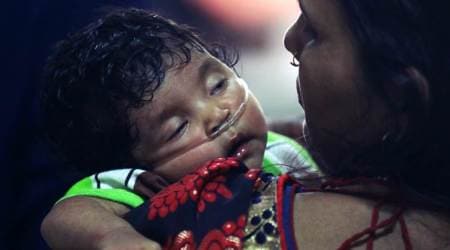 It is widely estimated that nearly 12,000 former LTTE combatants, some of whom were forcibly conscripted by the LTTE, have participated in the formal rehabilitation programmes run by the government. (Express Archive)
It is widely estimated that nearly 12,000 former LTTE combatants, some of whom were forcibly conscripted by the LTTE, have participated in the formal rehabilitation programmes run by the government. (Express Archive)
Three decades have passed since the Indo-Lanka Accord was signed between prime minister Rajiv Gandhi and Sri Lankan president J. R. Jayewardene in Colombo on July 29, 1987. Far from negotiating peace in Sri Lanka’s civil war between the government forces and the LTTE, this Accord unleashed a new phase of brutal violence by all sides.
As we take stock of the impact of this Accord and the India-Sri Lanka bilateral relationship 30 years later, it is time to remember the war and its many atrocities that continued beyond it. It is important to account for the silences that continue to speak while we prefer to not hear them. One such silence is that of the former women cadres of the LTTE who have been pushed into social exile and anonymity since the war ended.
Thevagi was a 23-year-old former cadre of the LTTE, when I met her at Batticaloa in August 2008. The war raged in the North while the East had been ‘liberated’ from the clutches of the enemy, by government forces. Thevagi desperately pleaded with me to contact officials in Colombo so she could be issued her husband’s death certificate who had also served in the LTTE. She needed it to enroll her 4-year-old daughter into the local school. Thevagi was one of several LTTE women I interviewed for my PhD research. Some women were disabled; most had been abandoned by their families as well as by Karuna Amman (Vinayagamoorthy Muralitharan or Col. Karuna), who had commanded them as the LTTE leader in the Eastern Provinces of Sri Lanka. Their families refused to pay the exorbitant dowry demanded in marriage negotiations simply because they had been in the ‘militant movement’. Thevagi’s words still ring true as one observes the treatment meted out to these former women fighters, since the war concluded in 2009 LTTE leader Prabhakaran and his male cadres have achieved a cult like status during and after the war, equally celebrated and vilified. Col. Karuna, once the commander of LTTE’s eastern front who later rebelled against Prabhakaran, served as the Deputy Minister of National Integration in the Rajapaksa administration. Last month he announced his own political party, the ‘Tamil United Freedom Party’ in Batticaloa, his home-town.
Kumaran Pathmanathan or K.P., once the main arms procurer for the LTTE, was arrested in 2009 and later released from government custody. Successfully rehabilitated, he runs orphanages in Killinochi and continues to give media interviews. Several male cadres and supporters of the LTTE have made their way back into society, joined mainstream politics and have even been recruited into the army since the end of the war.
It is widely estimated that nearly 12,000 former LTTE combatants, some of whom were forcibly conscripted by the LTTE, have participated in the formal rehabilitation programmes run by the government. Vocational training for them has included special skills in local trades, information technology, agriculture, animal farming, food processing, education, handicrafts, carpentry and the construction industry.
Many of these ex combatants also joined the Civil Security Department (CSD) in the North and East, although it is believed that the department was set up to patronise a loyal group of government informers. A visit to Jaffna and Vavuniya in 2015 revealed the culture of fear and persecution that Tamil civilians still face in these areas. Even a rumored accusation of having connections with the former LTTE has meant serious harassment by the security forces.
The Sri Lankan Army has absorbed many former cadres, mostly able-bodied young men. The inclusion of 95 women after undergoing training at the Army Training School in Killinochi made international news in 2013. These women came from the severely war affected areas of Mullaithivu, Vavuniya, Killinochi and Mannar. They learnt Sinhala and English languages apart from training in other military skills.
However, the rehabilitation and reintegration of women combatants has been a slow process with unfolding stories of further stigmatization and hardship. Many women have been rejected by their own families for having led unconventional lives and for transgressing gender norms as guerrilla fighters. More conservative views have labelled these women as sexually promiscuous, making it difficult for them to lead normal lives in secure conditions. Tamil war and photo journalist Dushiyanthini Kanagasabapathipillai has documented the poignant stories and challenges of reintegrating the women released from government run rehabilitation centres.
The situation of those disabled in the war is much worse, with little opportunities to find employment or economic security. The recently circulated story of Vetrichelvi Velu, an ex-LTTE cadre turned social worker from Mannar who runs a social service programme called, the ‘Welfare Organisation for Women with Disabilities’ (WOWD) raises some hope that the issue of disabled female fighters is getting much-needed attention. But the government rehabilitation programmes have hardly addressed the double stigmatization of the former women combatants who are disabled.
Moreover, feminist studies of conflicts have highlighted the gendered nature of rehabilitation and reintegration programmes, where women are pushed into vocational training that polices them into formal and acceptable gender roles. Consider the case of Thamilini or Subramaniam Sivakamy of Killinochi who joined the LTTE in 1991 and became the head of the women’s political wing.
Thamilini was the senior most woman cadre of the LTTE captured after the war and charged with recruitment and networking with the diaspora. After serving the prison term, she was sent to a rehabilitation camp and received training in bridal dressing. Once a dreaded fighter, then preparing brides for their weddings! Thamilini died of cancer in 2015, leaving behind an autobiography, Under a Sharp Sword, highlighting the war and its many atrocities.
Former fighter, Niromi de Soyza, now based in Australia, has also captured the pathos in the life of women fighters and their families. “We were better prepared for death than for life”, she says in her book, Tamil Tigress. Not any different from the women whom I met in 2008 who talked about the ‘freedom’ they felt living inside the war than outside it.
I recall my encounter with some of these former fighters in the secured premises of a local school in Batticaloa, during the peak of the war in 2008. The newly formed political outfit at the time, TMVP (Tamil Makkal Viduthalai Pulikal) led by Col. Karuna refused to create space for these women because in Karuna’s words, they “worked closely with the Sri Lankan security forces.” This irony was perhaps less hard-hitting than watching these women ferried by gun-wielding TMVP men who now provided them ‘security’ and ‘protection’ both from LTTE and the government forces.
These TMVP men had all been former members of the LTTE with whom the women had shared homeland dreams, battle glories, injuries and deaths of loved ones. Among the women whose lives I was trying to document, were also those who had served as personal bodyguards to Col. Karuna.
These women, who had dared to pick up arms to secure themselves and their fellow citizens, continue to suffer insecurities in the post-war context. Their own families and the larger Tamil community have also abdicated their responsibilities and contributed to their suffering and stigmatization.
Former women combatants of the LTTE continue to fight for their place in history and society. The battlefield has changed and the stakes are different now.

